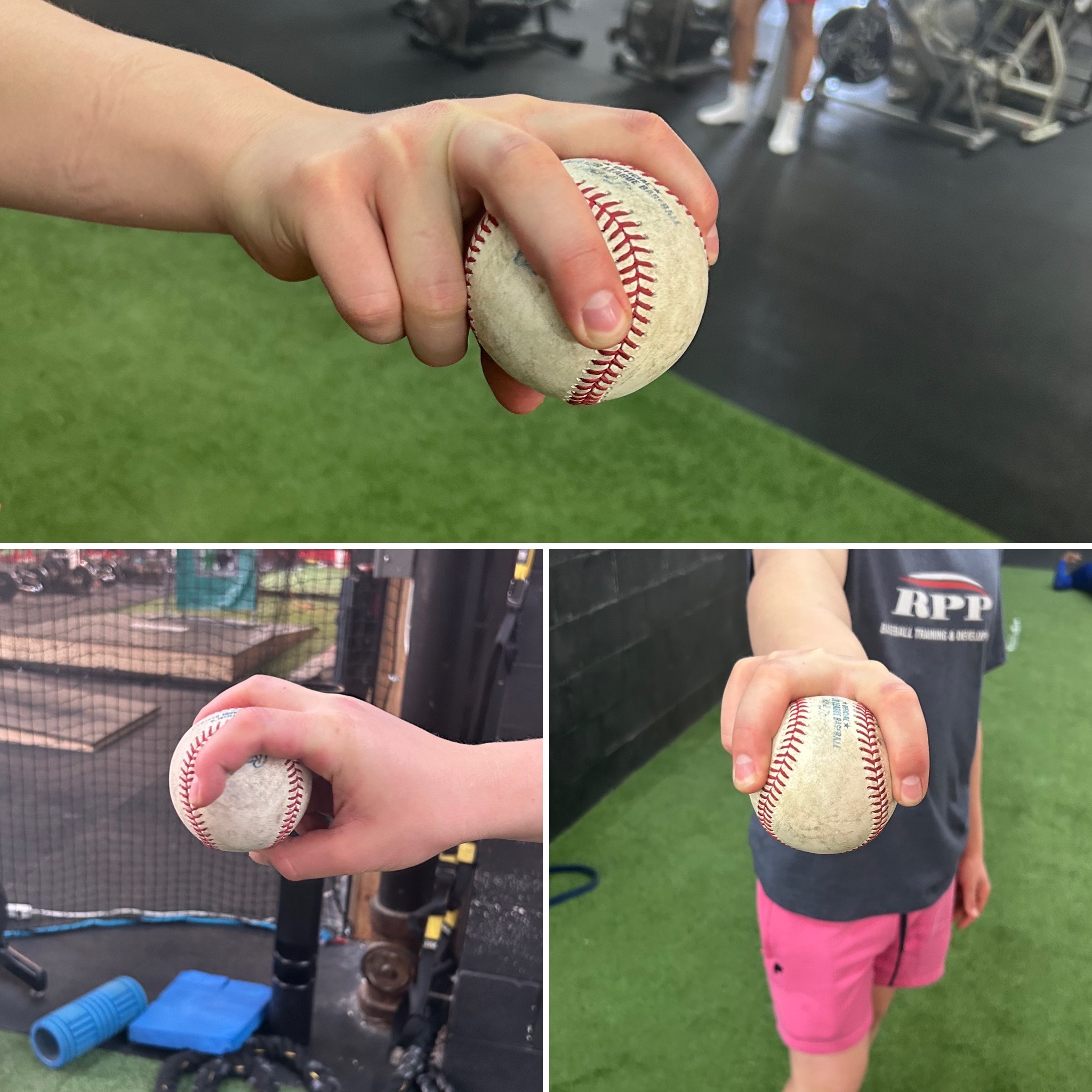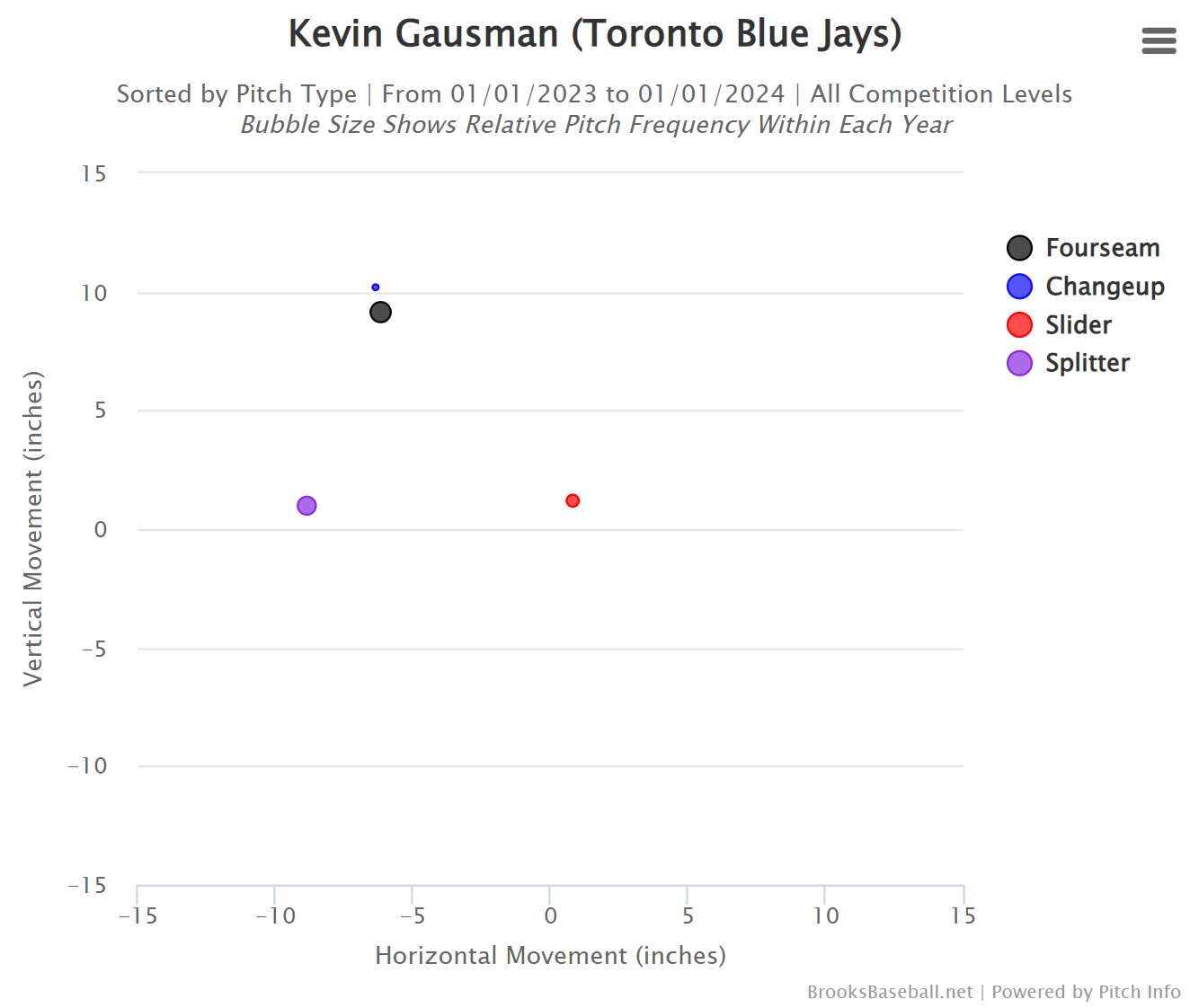
Welcome back to the “How to” series on pitching, where we will be diving into various pitches and speak about different grips, cues, tips, movement profiles, and even a top MLB comparison for reference when looking at a given pitch. Next up, how to throw a splitter.
Overview

The splitter is an off-speed pitch similar to a change-up. It is thrown with a wide grip, causing it to spin significantly less than a fastball. The low spin rate causes this pitch to have serious drop when thrown correctly. The direction and how well it tunnels off of a pitcher’s fastball will cause it to disrupt hitters timing to cause swing and misses and ground balls.
Desired Movement Profile
Before we talk about the tips and tricks on how to throw a splitter, let’s continue to discuss how we want the splitter to move. As we mentioned already, splitters are similar to changeups… but not entirely the same. Due to the type of grip used when throwing a splitter, its movement can differ from pitch to pitch.
In addition, elite splitters have extremely low spin rates. Typically a splitter is thrown under 1000 RPM, but could be thrown as low as 800, 700, or even some cases of 600 RPM or lower. This significant decrease in RPM is what causes it to have such serious drop.
Although the goal of the splitter is to induce this “dropping” effect, the amount of horizonal movement on the splitter can vary from pitch to pitch. In addition to the drop, splitters typically will possess some degree of arm side run but also have the ability to sometimes cut slightly. Both outcomes are ok, assuming that the main goal is achieved, the pitch is “dropping”. For a right-handed pitcher, the splitter can move anywhere from -3 HB to +15HB, as long as the pitch maintains a vertical break of no more than 10 inches. (Thus achieving serious vertical separation from a pitcher’s fastball.)
Ideal Splitter Location on a Movement Chart
A movement chart is a tool that players and coaches can use to analyze the ideal movement and placement of a given pitch.

What each zone represents:
-
- The upper right quadrant represents positive vertical movement and positive horizontal movement.
- The upper left-hand quadrant represents positive vertical movement and negative horizontal movement.
- The lower right-hand quadrant represents negative vertical movement and positive horizontal movement.
- The lower left-hand quadrant represents negative vertical movement and negative horizontal movement.
The chart pictured above is representative of a right-handed pitcher’s ideal placement for each pitch. A splitter is one you want to “drop” out of the pitcher’s hand. Although the splitter will typically have some degree of arm side run, it’s possible for this pitch to cut slightly at times. This means it will typically have positive horizontal break towards the pitcher’s arm side but sometimes break towards the pitcher’s glove side. This puts the upper right-hand quadrant as the most ideal for right-handed splitter that runs. In addition, that puts the upper-left handed quadrant (really close to the axis) as the most ideal for right-handed splitters that cuts.
For lefties, the vertical drop would stay the same. But the horizontal movement that would be desired would have negative value when running and positive value when cutting Therefore, making the upper left-hand quadrant as the most ideal for a left-handed splitter that runs. In addition, that puts the upper-right hand quadrant (really close to the axis) as the most ideal for left-handed splitters that cuts.
Interested in learning more about remote programs, you can simply click below to schedule a phone call.
Splitter Grip
Now let’s dive into how to grip the splitter…
Generally speaking, the splitter will be thrown with a wide grip (index and middle fingers) which causes the decrease in RPM that generates the downward movement. In addition, hand size and finger flexibility can definitely play a role in the ability to throw the splitter. There are several variations that we try with our athletes:
Grip #1 – Standard Splitter
The standard splitter grip will have the index and middle fingers spread out around a typical 2-seam grip with the thumb underneath the baseball for control. The ring and pinky fingers will be off to the side, allowing the splitter to come off the inside of the split fingers.

Grip #2 – Standard Splitter (with a hiked thumb)
Here is a variation to the standard grip that alter thumb placement which can help guys get a better feel for the splitter.

Grip # 3 – The Off-Set
Here is another variation to the standard grip that offsets the grip to the right to allow for more finger pressure which can help guys get a better feel for the splitter.

Grip #4 – “The Gausman”
The last variation we use, the “Gausman”, allows for more fingers on top of the ball which could give guys more of a “controlled” feel compared to the traditional splitter grip.

Cues to Help You Throw a Splitter
Let’s start with this… throwing cues are NOT ONE SIZE FITS ALL!!
There are many different cues that people use when teaching pitchers how to throw a splitter. You need to find which cue best suits YOU and helps YOU throw your splitter more effectively. Some of the cues we use with our athletes are:
-
- Let the ball come off the inside of your fingers
- Don’t release the ball with your fingertips
- Pull the split fingers down towards the plate
- Throw the pointer finger first
Tunneling Tips – When and Where to Throw a Splitter
The splitter is a great pitch to play off of a 4-seam fastball. The difference in vertical drop, and separation, between the splitter and 4-seam fastball make it a very deceptive combination. The direction of this pitch and how well it tunnels off of a pitcher’s fastball will cause this pitch to disrupt hitters timing to cause swing and misses and ground balls.
Elite MLB Splitters
Standard Splitter Grip – Shohei Ohtani is a great example of someone who throws an ELITE splitter with a standard grip. Last year, Ohtani had one of the best splitters in baseball. This pitch compliments his 4-seam fastball well and it’s evident by the results. It consistently disrupted hitters timing, induced swing and misses, and produced weak contact.
In 2022, Ohtani’s splitter produced a .126 BA, .166 wOBA, 49.7 whiff %, and 30.4 K%. Here is a great example to look at when trying to emulate an ELITE splitter with a standard grip.
Below is Ohtani’s pitch movement chart with the purple dot near the middle representing his splitter movement:

Outlier Splitter Grip – Despite his unorthodox grip, Kevin Gausman throws an ELITE splitter. Gausman’s splitter is so effective at complimenting his 4-seam that he is essentially a “2-pitch pitcher”. Last year, Gausman’s splitter was the most chased pitch in all of baseball registering a 50.9% chase rate.
In 2022, his splitter produced a .195 BA, .231 wOBA, 44.1% whiff%, and 25.0 K%. Although most splitters in the MLB aren’t thrown the way Gausman throws it, he could still be an ELITE pitcher to try and emulate if you want to throw a nasty splitter with an unorthodox grip.
Below is Gausman’s pitch movement chart with the purple dot on the left representing his splitter movement:

By Jake Lebovitch (Pitching Coordinator, Strength Coach at RPP Baseball)
Articles in the How to Throw series:
You live too far to train with us in-house at RPP? You can now train with us on a REMOTE basis.


